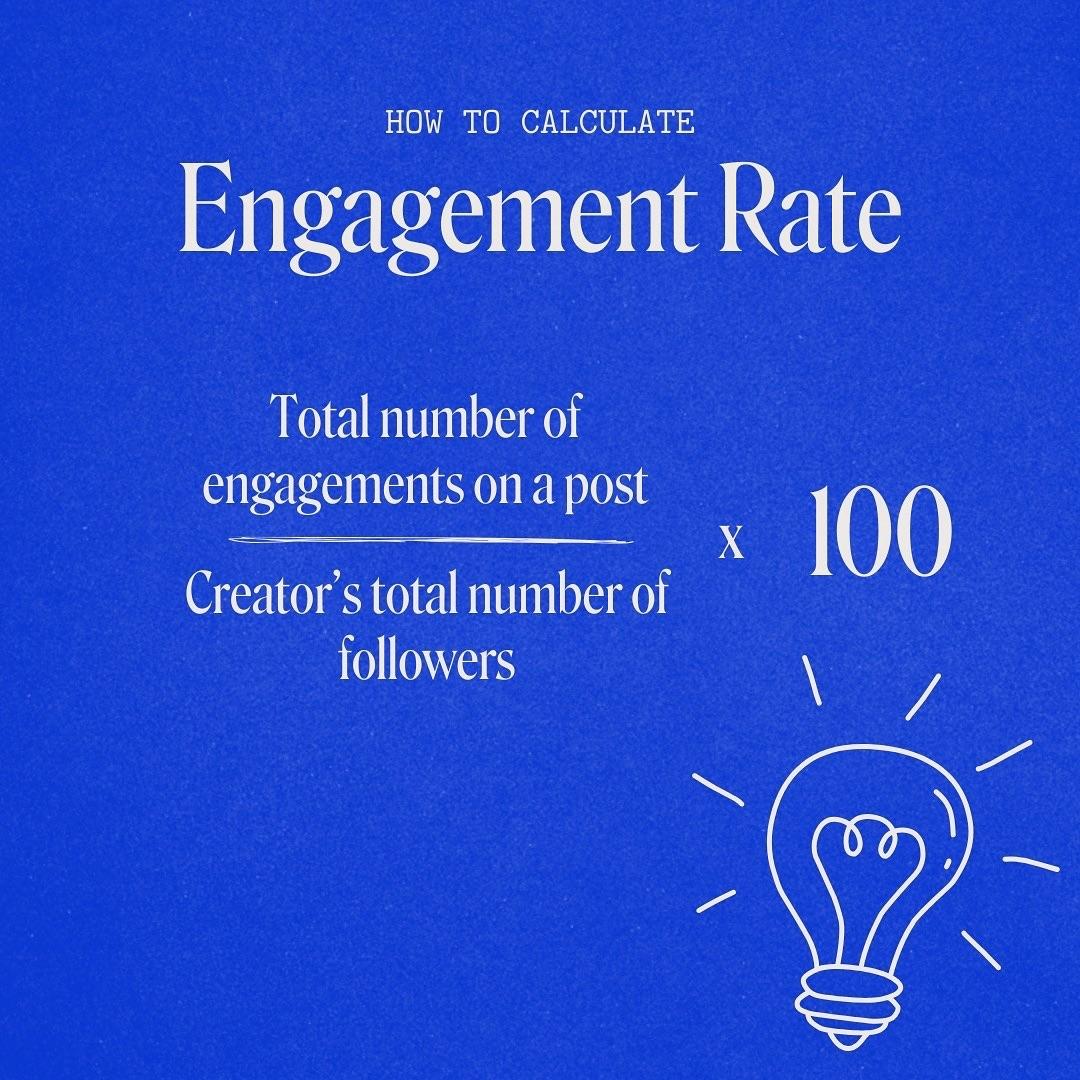
In today’s digital landscape, your brand’s reputation can be built or broken in the blink of an eye. One negative review, a misguided tweet, or a misinterpreted post can spiral into a full-blown crisis, leaving you scrambling to protect what you’ve worked so hard to build. But fear not—navigating the complexities of business reputation management doesn’t have to be daunting. In this practical guide, we’ll explore effective strategies to safeguard your brand online and turn potential pitfalls into opportunities for growth. Whether you’re a seasoned entrepreneur or just starting out, understanding the ins and outs of reputation management is essential. Let’s dive in and discover how you can not only protect your brand but also enhance its presence in the ever-evolving digital world!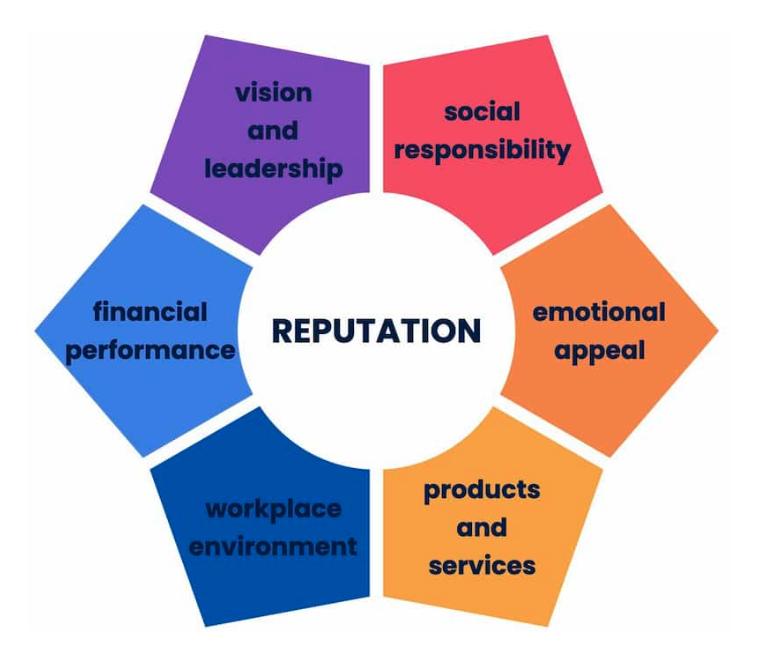
Understanding the Importance of Business Reputation Management
In today’s digital landscape, a brand’s reputation can be its greatest asset or its worst liability. With a single negative review or a scandal making waves on social media, the perception of your business can change overnight. That’s why understanding and managing your business’s reputation is crucial for long-term success.
Building a positive reputation entails more than just delivering quality products or services. It involves actively engaging with your audience and establishing trust. To effectively manage your reputation, consider the following key strategies:
- Monitor Online Mentions: Keep an eye on what people are saying about your brand across various platforms, including social media, review sites, and forums. Use tools like Google Alerts or reputation management software to stay informed.
- Respond Promptly: Addressing customer feedback, both positive and negative, shows that you value their opinions. A timely response can turn a dissatisfied customer into a loyal advocate.
- Encourage Positive Reviews: Satisfied customers are your best marketing tool. Encourage them to leave reviews and testimonials on platforms relevant to your industry.
- Be Transparent: If mistakes are made, own up to them. Transparency fosters trust and can mitigate the effects of negative incidents.
Creating a proactive strategy to enhance your brand’s reputation includes promoting positive content that resonates well with your audience. This involves not just managing negativity but also highlighting your business’s strengths and values. Consider these tactics:
- Content Creation: Share blog posts, videos, and stories that reflect your brand’s mission and what sets you apart from competitors.
- Social Media Engagement: Be active on social media platforms where your audience spends their time. Engage with followers, share user-generated content, and participate in discussions to build community.
- Corporate Social Responsibility: Participate in community service or charitable contributions. This not only enhances your brand image but also strengthens community ties.
To put your strategies into perspective, consider the following table that outlines the potential impact of effective reputation management versus neglecting it:
| Effective Reputation Management | Neglecting Reputation Management |
|---|---|
| Increased customer trust | Customer skepticism |
| Higher sales and conversion rates | Declining sales |
| Improved brand loyalty | High customer turnover |
| Attracting top talent | Difficulties in recruitment |
Ultimately, reputation management is not a one-time task but an ongoing process that requires attention and dedication. By actively managing your online presence and engaging with your audience, you not only protect your brand but also cultivate a positive image that resonates with consumers. In a world where opinions can shift rapidly, being proactive about your reputation is not just advisable; it’s essential for survival in the competitive marketplace.
Identifying Your Brands Online Presence
Understanding your brand’s online presence is crucial in today’s digital landscape. It’s not just about having a website; it involves a multitude of platforms where your brand can be represented or misrepresented. This awareness is the first step to effective reputation management.
To kick off your assessment, start by identifying where your brand appears online. This includes:
- Social Media Platforms: Facebook, Instagram, Twitter, LinkedIn, and others.
- Review Sites: Yelp, Google Reviews, TripAdvisor, and industry-specific review platforms.
- Forums and Community Boards: Reddit, Quora, and niche industry forums.
- Your Website: Ensure it’s user-friendly and reflects your brand’s values.
Once you’ve compiled a list of these platforms, it’s time to analyze the content associated with your brand. Pay close attention to:
- Customer Feedback: Reviews and comments can provide insight into how your brand is perceived.
- Engagement Levels: How often are people interacting with your content? This can indicate brand loyalty.
- Content Quality: Assess whether the content around your brand is professional and aligns with your brand image.
Next, consider using tools that offer brand monitoring services. Tools like Google Alerts, Mention, or Hootsuite allow you to track mentions of your brand across various platforms, ensuring you stay informed about what’s being said, good or bad. This proactive approach helps you respond swiftly to any potential threats to your reputation.
It’s also beneficial to create a visual representation of your brand’s online presence. A simple table can help you keep track of various metrics like engagement rates, sentiment analysis, and platform performance:
| Platform | Engagement Rate | Sentiment | Notes |
|---|---|---|---|
| 5% | Positive | Strong community interaction | |
| 8% | Neutral | Mixed reviews on products | |
| 3% | Negative | Address complaints promptly | |
| Google Reviews | N/A | Positive | High ratings and feedback |
Lastly, don’t forget the importance of consistency in your brand messaging across all platforms. Ensure that your voice, mission, and values are reflected uniformly. This alignment fosters trust and can significantly enhance your reputation.
By identifying and actively managing your brand’s online presence, you empower yourself to navigate the often-turbulent waters of digital reputation. Stay informed, engaged, and ready to respond, and you’ll find that your brand not only survives but thrives online.

Monitoring Your Brand: Tools and Techniques That Work
In today’s fast-paced digital environment, keeping an eye on your brand’s reputation is more crucial than ever. With the constant flow of information on social media and review sites, having the right tools and techniques at your disposal can help you not only monitor your image but also protect it. Here are some tried-and-true methods to ensure your brand remains in good standing.
Social Media Monitoring Tools are essential for tracking what’s being said about your brand across platforms like Twitter, Facebook, and Instagram. Consider using:
- Hootsuite: This tool enables you to track mentions, comments, and hashtags related to your brand in real-time.
- Brandwatch: A powerful analytics platform that provides insights into your brand’s sentiment and audience engagement.
- Sprout Social: Offers advanced monitoring features to keep tabs on customer interactions and feedback.
Next, don’t underestimate the power of Google Alerts. Setting up alerts for your brand name, key products, or even your competitors can keep you informed about new mentions across the web. This allows you to react swiftly to any potential issues, whether they are positive or negative.
Another effective strategy is to utilize review management software. These tools help you monitor and respond to customer reviews across various platforms, which can significantly impact your reputation. Look for software that allows you to:
- Track reviews from multiple sites (Yelp, Google, etc.) in one place.
- Respond directly to reviews to show that you value customer feedback.
- Analyze trends in customer sentiment and adjust your strategy accordingly.
Sentiment analysis tools are also a game changer. Using AI-driven software, you can gauge the overall sentiment of online conversations about your brand. This insight allows you to identify areas needing improvement, whether it’s product quality, customer service, or marketing tactics. Popular options include:
- Lexalytics: Provides valuable sentiment and theme analysis from customer communications.
- MonkeyLearn: A user-friendly platform for customizing and training sentiment analysis models.
| Tool/Technique | Benefits |
|---|---|
| Social Media Monitoring | Real-time tracking of brand mentions and sentiment |
| Google Alerts | Instant notifications for new web content related to your brand |
| Review Management Software | Consolidated view of customer feedback across platforms |
| Sentiment Analysis Tools | Deep insights into public perception and trends |
Remember, the goal isn’t just to monitor but to engage. Actively responding to feedback, both positive and negative, can enhance customer relationships and foster loyalty. By leveraging these tools and techniques, you can build a robust reputation management strategy that not only protects your brand but also propels it forward.
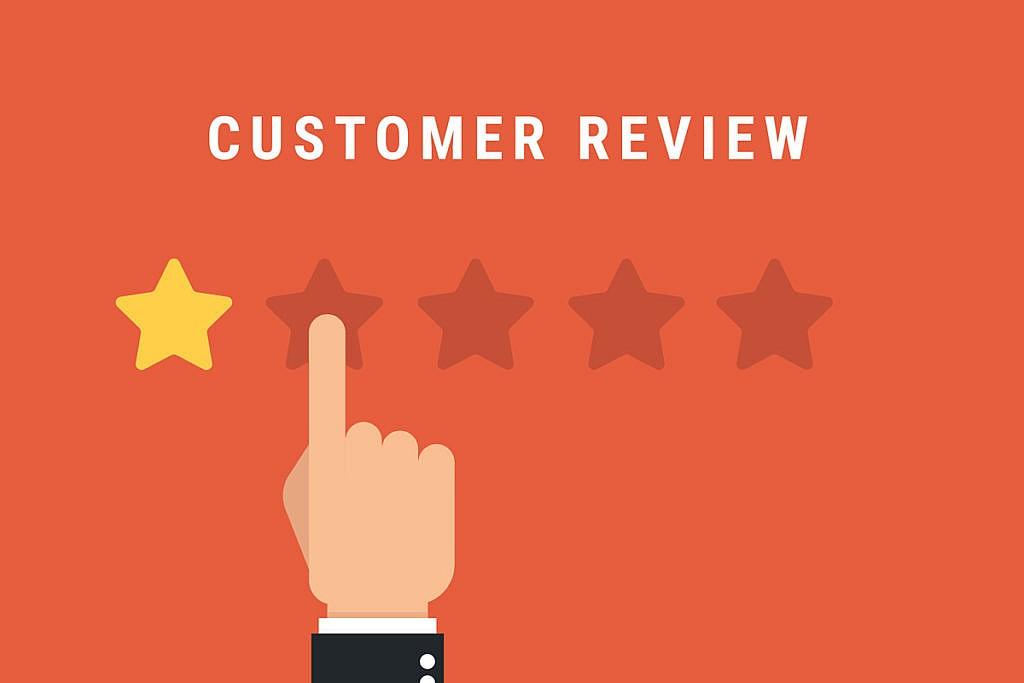
Navigating Negative Reviews: Turning Criticism into Opportunity
Negative reviews can feel like a punch to the gut, but they don’t have to be the end of the world. In fact, they can serve as a valuable opportunity to grow and improve your business. When handled correctly, criticism can provide insights into customer experiences and expectations. Here are some strategies to help you transform negative feedback into a stepping stone for success.
Listen and Learn
First and foremost, take a moment to truly listen to what your customers are saying. Each review, no matter how harsh, holds a nugget of truth. Here’s how to approach this:
- Read between the lines: Analyze the feedback for recurring themes or issues that may need addressing.
- Stay calm: Resist the urge to react defensively. Instead, approach the situation as a chance to learn.
Respond thoughtfully
Crafting a well-considered response can turn a negative experience into a positive one. Here’s what to keep in mind:
- Acknowledge the issue: Let the reviewer know you understand their concern.
- Apologize sincerely: A genuine apology can go a long way in mending relationships.
- Offer a solution: Discuss how you plan to address their concerns, showing that you value their input.
Take Action
Once you’ve gathered insights from the reviews, it’s time to act. If multiple customers point out the same issue, it’s a clear sign that improvements are necessary. Consider:
- Training staff: Enhance customer service training to better meet expectations.
- Updating products: Make product adjustments based on feedback to improve functionality or satisfaction.
Promote Positive Change
Don’t shy away from showcasing improvements that stemmed from customer feedback. Share updates on your website and social media channels to highlight your commitment to customer satisfaction. This not only builds trust but also demonstrates that you value input from your clientele.
Encourage More Reviews
After making changes, invite satisfied customers to share their positive experiences. A surge of positive reviews can amplify your brand’s reputation and dilute the impact of any negative feedback. Consider:
- Timing: Ask for reviews after a positive interaction.
- Incentives: Offer small discounts or freebies for leaving a review.
Monitor Feedback
make it a habit to regularly monitor reviews across various platforms. Keeping a close eye on customer feedback allows you to stay ahead of potential issues and address them before they escalate. Implementing a feedback loop ensures that you’re continuously improving your services based on customer insights.
| Action | Outcome |
|---|---|
| Respond to negative reviews | Improved customer trust |
| Implement changes based on feedback | Better customer satisfaction |
| Encourage positive reviews | Stronger online reputation |
Building a Positive Reputation Through Engaging Content
In today’s fast-paced digital landscape, creating and maintaining a solid reputation is more crucial than ever. Engaging content plays a pivotal role in how your brand is perceived online. When you produce content that resonates with your audience, you’re not just providing information; you’re building trust and establishing a connection that can set your brand apart from the competition.
To cultivate a positive reputation, consider the following strategies for your content:
- Authenticity: Your audience can spot insincerity from a mile away. Share genuine stories about your brand, its values, and the people behind it. Authentic content fosters trust and makes your brand relatable.
- Value Addition: Focus on creating content that adds value to your audience’s lives. Whether it’s through informative blog posts, how-to videos, or infographics, ensure that your content addresses their needs and pain points.
- Engagement: Encourage interaction by asking questions, inviting feedback, and responding to comments. Engaging with your audience helps to build a community around your brand, making them more likely to advocate for you.
- Consistency: Regularly posting fresh content keeps your brand top-of-mind. Establish a content calendar that outlines your posting schedule, and stick to it. This consistency reassures your audience and builds reliability.
- Storytelling: Use storytelling techniques to make your content more relatable. People remember stories better than facts, so weave your brand message into a narrative that resonates with your audience.
Another effective approach is leveraging testimonials and case studies. Highlighting customer experiences can significantly enhance your credibility. Consider creating a dedicated section on your website or blog where you showcase success stories and reviews, allowing potential customers to see the positive impact your products or services have had on real people.
Utilizing various content formats can also amplify your reach. Experiment with:
- Videos: Short, engaging videos can be shared across social media, capturing attention in a dynamic way.
- Podcasts: These allow you to connect with your audience more personally and can establish you as an authority in your industry.
- Webinars: Hosting informative sessions can demonstrate your expertise while providing value to attendees.
The impact of your content can be measured using key performance indicators (KPIs). A simple table can help you understand how your content is performing:
| Content Type | Engagement Rate | Conversion Rate |
|---|---|---|
| Blog Posts | 5% | 2% |
| Videos | 10% | 3% |
| Podcasts | 7% | 4% |
| Webinars | 15% | 6% |
By analyzing these metrics, you can adjust your content strategy to focus on formats that yield the best results. Remember, a positive brand reputation doesn’t happen overnight. It requires a commitment to consistently deliver valuable, engaging content that speaks to the heart of your audience.
Leveraging Social Media for Reputation Enhancement
In today’s digital age, social media platforms are not just for sharing personal updates; they are powerful tools for businesses aiming to enhance their reputation. Engaging with your audience through these channels can significantly influence public perception and foster a positive brand image.
To effectively harness social media for reputation enhancement, consider these strategies:
- Active Engagement: Respond to comments and messages promptly. Acknowledging customer feedback, whether positive or negative, demonstrates that you value their opinions and are committed to improvement.
- Content Creation: Share valuable content that resonates with your audience. This could include blog posts, infographics, or videos that reflect your brand values and expertise.
- Building Community: Create a sense of community by encouraging discussions and sharing user-generated content. This not only builds relationships but also enhances loyalty.
- Monitoring Brand Mentions: Use social listening tools to monitor what people are saying about your brand. This proactive approach allows you to address issues before they escalate.
One effective way to showcase your commitment to customer satisfaction is through testimonials and case studies. Share success stories on your social media platforms to highlight how your products or services have positively impacted your customers’ lives. This not only builds trust but also positions your brand as a solution provider.
Transparency is crucial in today’s market. Customers appreciate honesty, so don’t shy away from addressing mistakes or criticisms openly. A public acknowledgment, along with a well-thought-out response, can turn a potential PR crisis into an opportunity for reputation enhancement.
Consider the power of influencer partnerships. Collaborating with reputable influencers can amplify your brand message and reach a broader audience. Choose influencers who align with your brand values and have a loyal following to ensure authenticity.
| Strategy | Benefit |
|---|---|
| Active Engagement | Builds trust and loyalty |
| Content Creation | Establishes authority |
| Community Building | Fosters customer relationships |
| Monitoring Mentions | Prevents PR crises |
| Transparency | Enhances brand credibility |
| Influencer Partnerships | Expands reach and visibility |
leveraging social media effectively can significantly enhance your business reputation. By engaging authentically with your audience, demonstrating transparency, and showcasing customer success stories, you can foster a positive image that not only protects your brand but also propels it forward in a competitive landscape.

Creating a Crisis Management Plan for Your Brand
In today’s fast-paced digital landscape, having a robust crisis management plan is not just a luxury; it’s a necessity for brands looking to safeguard their reputation. A well-crafted plan prepares you to respond swiftly and effectively to any situation that threatens your brand’s integrity. Here’s how to create a crisis management plan that not only protects your brand but also builds trust with your audience during tough times.
Identify Potential Risks
Start by identifying the potential crises your brand could face. Think broadly and consider various scenarios, including:
- Negative Reviews: Sudden influx of unfavorable feedback across platforms.
- Data Breaches: Compromised customer data that could lead to a loss of trust.
- Public Relations Issues: Misstatements by employees or executives that could damage your image.
- Social Media Backlash: Viral posts or campaigns that backfire.
Establish a Crisis Team
Form a dedicated crisis management team responsible for executing the plan. This team should include key members from various departments such as:
- Public Relations: To manage communication and media inquiries.
- Legal: To ensure compliance and mitigate legal risks.
- Marketing: To align messaging and brand voice.
- IT: To address technical issues or data concerns swiftly.
Develop Clear Communication Protocols
Effective communication is essential during a crisis. Develop clear protocols that outline:
- Who Speaks: Designate spokespersons to ensure consistent messaging.
- How to Communicate: Decide on channels (social media, press releases, emails) for communication.
- When to Communicate: Set timelines for responses to keep stakeholders informed.
Craft a Response Strategy
Your response strategy should focus on transparency and empathy. Customers appreciate honesty during difficult times. Consider including:
- Timely Updates: Regularly inform stakeholders about the situation’s status.
- Apologies if Necessary: Acknowledge mistakes and take responsibility.
- Actions Taken: Outline steps being implemented to resolve the issue and prevent recurrence.
Monitor and Evaluate
After a crisis, it’s critical to monitor the fallout and evaluate your response. Conduct a thorough analysis of:
- Public Sentiment: Use social media monitoring tools to gauge public reaction.
- Media Coverage: Assess how the media portrayed your brand during the crisis.
- Effectiveness of Your Response: Identify what worked and what didn’t for future improvement.
Training and Simulation
ensure that your crisis management plan is not just a document sitting on a shelf. Regularly train your team and conduct simulation exercises to prepare everyone for real-life scenarios. This practice helps:
- Build Confidence: Team members will feel more prepared to handle a real crisis.
- Identify Weaknesses: Simulations can reveal gaps in your plan that need addressing.
Table: Crisis Management Plan Snapshot
| Key Component | Description |
|---|---|
| Risk Identification | Evaluate potential crises and their impact. |
| Crisis Team | Designate roles and responsibilities. |
| Communication Protocols | Outline who, how, and when to communicate. |
| Response Strategy | Formulate a transparent and empathetic approach. |
| Monitoring | Assess public sentiment and media coverage. |
| Training | Regular simulations to refine your response. |

Encouraging Customer Feedback and Testimonials
In today’s digital landscape, encouraging customer feedback is not just beneficial; it’s essential for maintaining a positive brand image. Engaging with your customers and inviting them to share their experiences can create a strong bond and encourage loyalty. Here are some effective strategies to gather valuable insights from your customers:
- Ask for Reviews: Make it a habit to request reviews after a purchase or service. Sending a follow-up email can remind customers to share their thoughts, ensuring that their voices are heard.
- Social Media Engagement: Utilize your social media platforms to create engaging posts that ask for feedback. This not only boosts interaction but also shows that you value customer opinions.
- Incentivize Feedback: Consider offering discounts or freebies in exchange for testimonials. This can motivate customers to take the time to leave a review.
- Surveys and Polls: Implement short surveys on your website or through email to gather specific feedback about products and services. Keep it concise to encourage participation.
- Highlight Customer Stories: Share testimonials and stories from satisfied customers on your website and social media. This not only builds trust but also shows potential customers what they can expect.
To effectively showcase these testimonials, consider creating a dedicated section on your website. A well-organized testimonial page can significantly enhance your credibility. Here’s a simple table layout you could use to present customer feedback:
| Customer Name | Testimonial | Rating |
|---|---|---|
| Jane Doe | “Absolutely loved my experience! The service was top-notch.” | ⭐⭐⭐⭐⭐ |
| John Smith | “Quick delivery and great customer support. Highly recommend!” | ⭐⭐⭐⭐ |
| Emily Johnson | “The quality exceeded my expectations. Will be back for more!” | ⭐⭐⭐⭐⭐ |
Remember, the key is to create a welcoming environment where customers feel appreciated for their opinions. Responding to feedback—both positive and negative—demonstrates that you are listening and care about their experiences. This not only fosters community but also enhances your brand’s reputation.
Don’t forget to leverage user-generated content. Encourage customers to share photos using your product on social media. You can create a unique hashtag to categorize these posts, making it easy for potential customers to find authentic testimonials.
By actively encouraging customer feedback and showcasing it effectively, you not only enhance your brand’s image but also build a loyal customer base. This two-way communication can transform your business reputation and set you apart in a competitive market.

Establishing Brand Ambassadors and Influencer Partnerships
Creating a robust network of brand ambassadors and influencer partnerships is a strategic move to enhance your brand’s reputation and visibility. These individuals not only promote your products but also embody the values and ethos of your brand, paving the way for authentic connections with your target audience.
To kickstart this process, focus on identifying individuals who resonate with your brand’s identity. Consider factors such as:
- Relevance: Choose influencers whose content aligns with your industry and audience.
- Engagement: Look for those who actively engage with their followers, as their recommendations tend to be more impactful.
- Reputation: Evaluate their online presence and past collaborations to ensure they have a positive image.
Once you’ve identified potential ambassadors, reach out with a personalized pitch. Engage them in a conversation, expressing genuine interest in their work and explaining how a partnership could be mutually beneficial. It’s crucial to offer value beyond monetary compensation; consider providing exclusive access to products, behind-the-scenes experiences, or even co-creating content together.
Establishing clear expectations is vital for a successful partnership. Create a comprehensive agreement that outlines:
- Deliverables: Specify what content you expect from them – be it blog posts, social media shoutouts, or video reviews.
- Timeline: Set realistic deadlines for content creation and sharing.
- Compensation: Define how they will be compensated, whether through payment, products, or affiliate commissions.
Moreover, nurture these relationships over time. Regular communication helps maintain enthusiasm and loyalty. Check in often, provide feedback, and celebrate their successes in promoting your brand. This two-way relationship fosters trust and authenticity, essential elements for driving your brand’s reputation forward.
Utilize data analytics to track the performance of your influencer partnerships. Monitor engagement rates, referral traffic, and conversions linked to their efforts. This information will help you refine your strategy and recognize your most effective ambassadors.
Lastly, recognize that building a network of brand ambassadors is not a one-time effort. It requires ongoing commitment and adaptation. By continuously assessing your partnerships and being open to new collaborations, you can enhance your brand’s reputation while creating a community of passionate advocates.

The Role of SEO in Protecting Your Online Reputation
In today’s digital landscape, the significance of SEO extends beyond mere visibility; it plays a pivotal role in safeguarding your brand’s reputation. Search engines are often the first touchpoint potential customers have with your business, making it essential to manage what they find about you online.
One of the most effective ways SEO contributes to your online reputation is through content control. By optimizing content related to your business, you can ensure that positive narratives and accurate information rank higher than any negative mentions. This involves:
- Creating high-quality blog posts that highlight your expertise and value.
- Engaging with reviews and testimonials to showcase customer satisfaction.
- Using keywords wisely to align with the positive aspects of your brand.
Monitoring your online presence is another crucial aspect where SEO comes into play. Utilizing SEO tools can help you track mentions of your brand across the web, allowing you to address any negative content swiftly. Regular audits of your online reputation can guide your strategy to improve search engine rankings. Here are some tools that can assist you:
| Tool | Purpose |
|---|---|
| Google Alerts | Monitor mentions of your brand in real-time. |
| SEMrush | Comprehensive keyword tracking and competitor analysis. |
| Ahrefs | Backlink analysis to see who is linking to you. |
Engaging with your audience through local SEO strategies can also bolster your reputation. By optimizing your Google My Business profile and ensuring accurate information is available, you can build trust within your community. A well-managed local presence not only boosts visibility but also fosters a connection with customers, enhancing their perception of your brand.
Don’t underestimate the power of social signals in your SEO strategy. Social media platforms often serve as amplification tools for your brand’s message. Positive interactions and shares can improve your authority and authenticity, which search engines tend to reward. Encourage your satisfied customers to share their experiences, as these organic endorsements are invaluable.
Incorporating backlink strategies is another way to enhance your online reputation. By acquiring backlinks from reputable sites, you signal to search engines and users alike that your business is trustworthy. Focus on building relationships with influencers and other businesses in your industry to cultivate links that enhance your credibility.
Lastly, remember that adaptability is key in reputation management. As algorithms change and new trends emerge, continuously refining your SEO tactics is vital. Stay informed about the latest SEO practices and be ready to pivot your strategy based on the evolving digital landscape. This proactive approach not only protects your reputation but can also elevate your brand to new heights.

Regularly Updating Your Brands Online Information
In today’s fast-paced digital landscape, keeping your brand’s online information up to date is more crucial than ever. Consumers rely heavily on the internet to make informed decisions, and any discrepancies in your brand’s information can lead to confusion, mistrust, and ultimately, lost sales. Regularly updating your online presence not only enhances your credibility but also plays a vital role in your overall reputation management strategy.
Consider the various platforms where your brand appears, such as:
- Social Media Profiles: Ensure that your business hours, contact information, and services offered are consistent across all channels.
- Business Listings: Keep your information accurate on platforms like Google My Business, Yelp, and any relevant industry-specific directories.
- Your Website: Regularly check for outdated content, broken links, or any changes in services that need to be reflected.
Another critical aspect of maintaining up-to-date information is understanding how it impacts your search engine optimization (SEO). Search engines favor fresh content, and by regularly updating your brand information, you signal to algorithms that your business is active and relevant. This can lead to improved rankings in search results, making it easier for potential customers to find you.
Moreover, consider the impact of user-generated content. Reviews, comments, and feedback can significantly shape your brand’s reputation. Engage with this content by:
- Responding Promptly: Address positive and negative feedback swiftly to show that you value customer input.
- Updating Listings: If a customer highlights an issue with your online information, fix it immediately to avoid further complications.
- Encouraging Reviews: Invite satisfied customers to leave positive reviews, which can help drown out negative sentiments.
To effectively manage the updates, consider creating a content calendar. This tool not only helps you plan regular updates but also allows for a strategic approach to refreshing your content. Here’s a simple example:
| Month | Action Item | Platform |
|---|---|---|
| January | Update business hours for the new year | Google My Business |
| February | Post a seasonal promotion | Facebook, Instagram |
| March | Review and respond to customer feedback | Yelp, TripAdvisor |
a proactive approach to maintaining your brand’s online information can significantly enhance your reputation and attract more customers. By prioritizing regular updates, you demonstrate commitment to quality and customer service, paving the way for long-term success. Don’t underestimate the power of a well-maintained digital presence; it speaks volumes about your brand’s integrity and reliability.
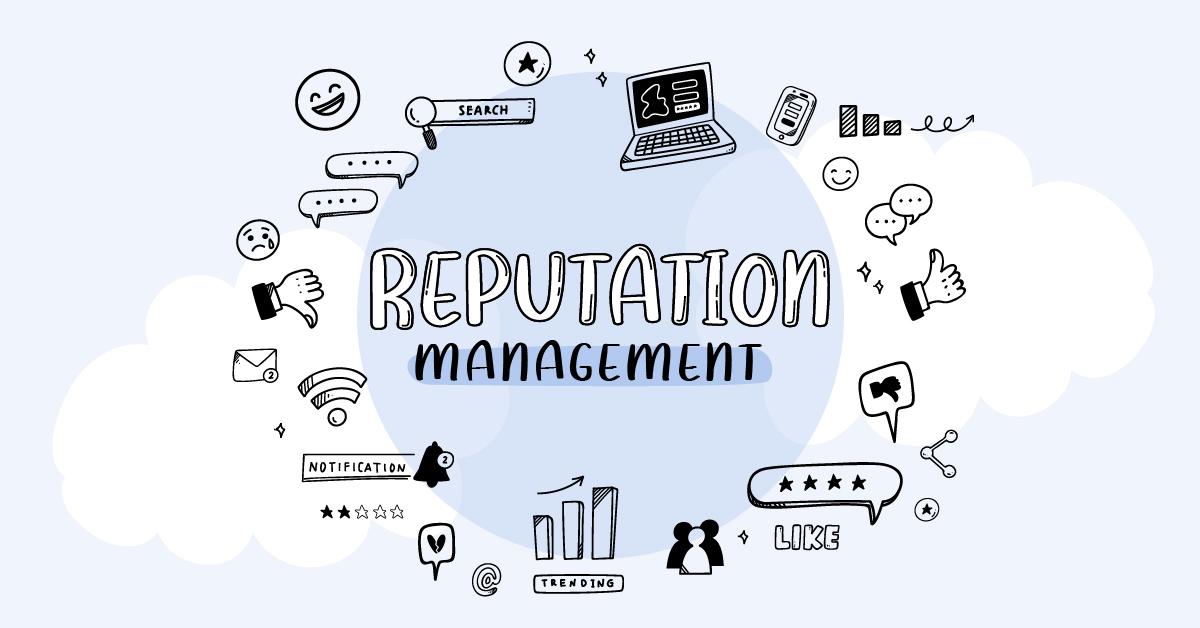
Educating Your Team on Reputation Best Practices
In today’s digital landscape, your team is your first line of defense against reputation mishaps. Educating them on reputation management best practices not only empowers them but also builds a culture of accountability. Here are some essential strategies:
- Understanding the Brand Voice: Make sure your team knows how to communicate in a way that aligns with your brand’s identity. Conduct workshops that emphasize tone, language, and style.
- Monitoring Online Presence: Teach your staff to regularly check online reviews, comments, and mentions. Utilize tools that can help them track sentiment and feedback effortlessly.
- Addressing Negative Feedback: Provide guidelines on how to respond to negative reviews or comments. A quick, empathetic response can often turn a dissatisfied customer into a loyal one.
- Encouraging Positive Engagement: Foster an environment where employees feel encouraged to share positive experiences. Highlight stories where your team made a difference for customers.
- Leveraging Social Media: Social media is a powerful tool for brand management. Train your team on how to use platforms effectively, emphasizing the dos and don’ts of online engagement.
To facilitate better understanding, consider implementing a training program that covers these areas in depth. This could include role-playing exercises where employees practice handling various scenarios, receiving immediate feedback.
| Best Practice | Action Steps | Expected Outcome |
|---|---|---|
| Brand Voice | Conduct workshops | Consistent communication |
| Online Monitoring | Use monitoring tools | Timely awareness of issues |
| Negative Feedback | Develop response templates | Improved customer relations |
| Positive Engagement | Share success stories | Boosted morale and reputation |
| Social Media | Training sessions | Effective online presence |
make reputation management a regular topic of conversation in team meetings. This continuous dialogue reinforces its importance and keeps everyone aligned on the objectives. Encourage team members to share insights and experiences, fostering a collaborative environment that thrives on collective learning.
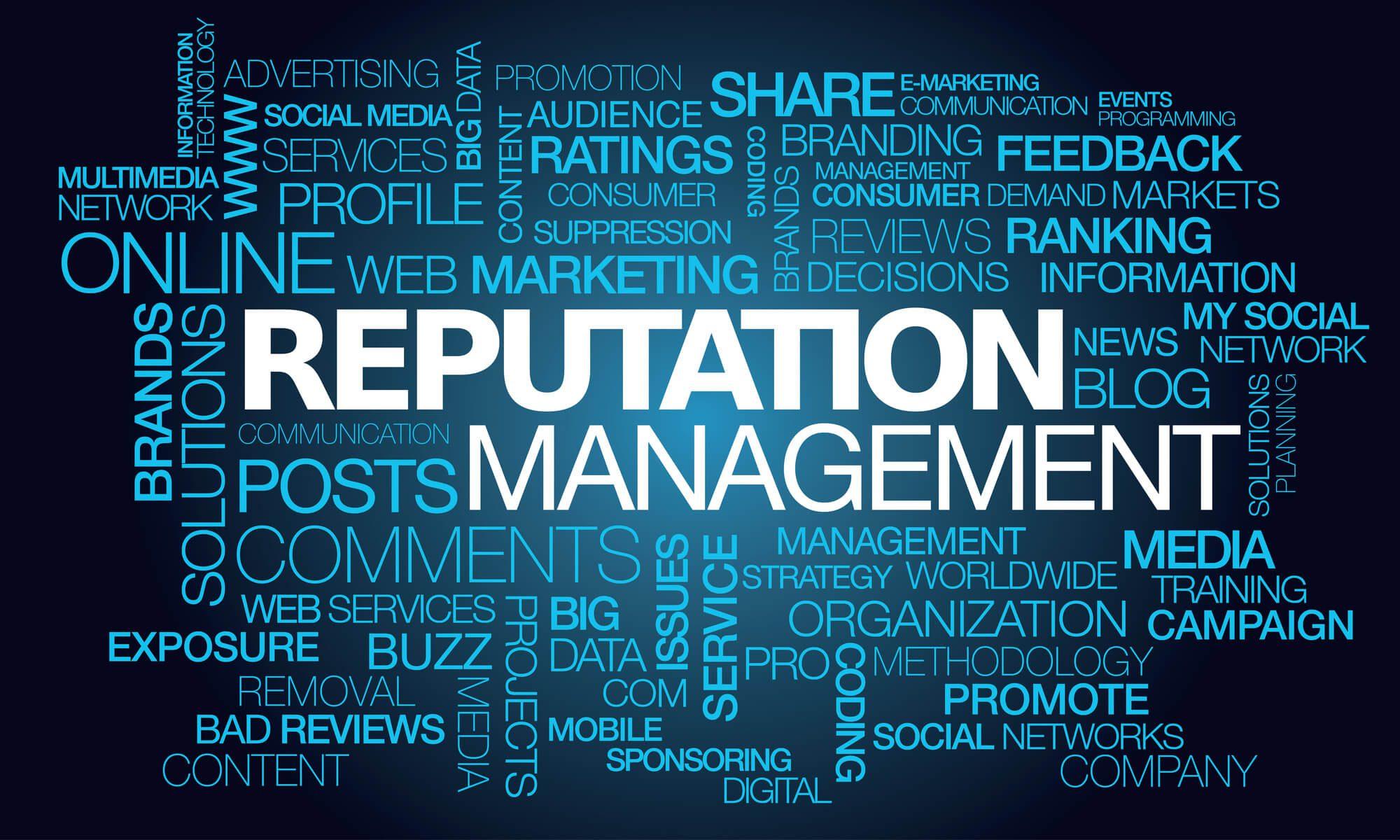
Measuring Success: Key Metrics for Reputation Management
When it comes to managing your brand’s reputation, understanding the right metrics is essential. These metrics not only help you gauge your current standing but also guide your strategy moving forward. Here are some key indicators to keep an eye on:
- Online Reviews: The quantity and quality of reviews across platforms like Google, Yelp, and Trustpilot can significantly influence public perception. Aim for a higher number of 4 and 5-star ratings.
- Social Media Engagement: Track likes, shares, comments, and mentions. A spike in engagement often reflects positive sentiment about your brand.
- Brand Mentions: Use tools to monitor how often your brand is mentioned across social media and other online platforms. More mentions can indicate increased awareness and interest.
- Net Promoter Score (NPS): This metric helps you understand customer loyalty by measuring how likely your customers are to recommend your business to others.
- Search Engine Rankings: Monitor your brand’s position for relevant keywords. Higher rankings typically correlate with a stronger reputation.
The importance of these metrics cannot be overstated. They provide a comprehensive overview of how your brand is perceived and can signal when it’s time to intervene with reputation management tactics. For instance, if you notice a decline in online reviews, it may be time to address customer service issues or gather feedback from your customers.
To give you a clearer picture, here’s a simple table to illustrate how these metrics can be tracked over time:
| Metric | Month 1 | Month 2 | Month 3 |
|---|---|---|---|
| Average Star Rating | 4.2 | 4.5 | 4.7 |
| Social Media Mentions | 150 | 200 | 300 |
| Net Promoter Score (NPS) | 25 | 30 | 35 |
| Brand Visibility (SEO Rank) | 5 | 4 | 3 |
Regularly reviewing these metrics allows you to adapt your reputation management strategies effectively. If you notice any troubling trends, you can implement specific actions—whether it’s enhancing your customer service, ramping up your content marketing, or engaging more actively on social media.
Another essential aspect is to benchmark against competitors. Understanding where you stand in comparison to others in your industry can provide valuable insights. Consider evaluating:
- Competitor Review Scores: How do they compare to yours?
- Social Media Following: Are you engaging more or less than your competitors?
- Content Engagement: How does your blog or resource center stack up?
Incorporating these metrics into your overall strategy not only helps you protect your brand online but also empowers you to make informed decisions that contribute to long-term success. Keep your finger on the pulse of your reputation, and you’ll be equipped to navigate the complexities of the digital landscape with confidence.

Staying Ahead of Trends: Future-Proofing Your Brands Reputation
In today’s fast-paced digital landscape, staying ahead of trends is crucial for maintaining a strong brand reputation. As consumers become increasingly savvy and their behaviors evolve, businesses must adapt and respond proactively. By anticipating shifts in public perception and industry trends, brands can safeguard their reputation and foster lasting loyalty among their customers.
One effective strategy is to monitor social media conversations closely. This not only helps you understand what your audience is saying about your brand but also allows you to identify potential issues before they escalate. Consider setting up alerts for brand mentions and using social listening tools to track sentiment. This way, you can engage with your audience in real-time, addressing concerns or questions that may arise.
- Engage with your audience: Respond to comments and messages promptly.
- Show empathy: Acknowledge customer concerns and frustrations.
- Share updates: Keep your audience informed about changes or improvements.
Another vital aspect of future-proofing your brand’s reputation is embracing transparency. In an age where consumers value authenticity, it’s essential to communicate openly about your business practices, values, and even mistakes. Transparency builds trust, and when customers see that you take accountability, they’re more likely to stand by your brand through challenging times.
Consider implementing a content strategy that showcases your brand’s commitment to ethical practices. Use your website and social media channels to share stories about your team’s efforts to make a difference, whether that’s through sustainability initiatives or community outreach programs. This not only enhances your reputation but also resonates with consumers who prioritize social responsibility.
Proactively adapting to technological advancements also plays a crucial role in reputation management. As new platforms and tools emerge, ensuring that your brand is present where your audience interacts can reinforce your relevance. Here’s a quick overview of technology trends to keep an eye on:
| Trend | Importance |
|---|---|
| AI and Automation | Enhances customer service and engagement. |
| Augmented Reality | Improves user experience and product visualization. |
| Video Content | Increases engagement and brand storytelling. |
investing in a crisis management plan is essential for any brand aiming to maintain a solid reputation. A well-prepared strategy can help you respond swiftly and effectively to unforeseen issues. Outline potential scenarios and appropriate responses, ensuring your team is trained and ready to act. This preparedness not only minimizes damage but also demonstrates your commitment to upholding your brand’s integrity.
By taking these proactive steps, you can ensure that your brand not only survives changes in the marketplace but thrives by building a reputation that resonates deeply with your audience. This forward-thinking approach not only protects your business but also positions it as a leader in your industry.
Frequently Asked Questions (FAQ)
Q&A: Business Reputation Management – A Practical Guide to Protecting Your Brand Online
Q: Why is business reputation management so crucial in today’s digital world?
A: In today’s hyper-connected world, your brand’s reputation can make or break you. Consumers are more informed than ever, relying heavily on online reviews, social media, and news articles to make purchasing decisions. A single negative review can deter potential customers. By actively managing your online reputation, you can cultivate a positive image that builds trust and drives sales.
Q: What are the first steps I should take to manage my brand’s reputation?
A: Start by auditing your current online presence. Search for your brand on Google and check what comes up. Look at reviews on platforms like Google My Business, Yelp, and social media. This will give you a clear idea of how your brand is perceived. Next, set up alerts for your brand name so you can monitor mentions in real-time. Being proactive is key!
Q: How do I handle negative reviews or feedback?
A: First, don’t panic! Negative feedback is an opportunity to showcase your commitment to customer service. Respond promptly and professionally, acknowledging the issue and offering a solution. This not only helps resolve the situation but also shows potential customers that you care about their experience. Remember to take the conversation offline if needed to resolve the matter privately.
Q: Is it possible to turn a negative situation into a positive one?
A: Absolutely! Many brands have turned negative reviews into positive experiences. For example, by addressing a customer’s complaint directly and resolving it, you can convert an unhappy customer into a loyal advocate. Share these stories on your social media or website to highlight your commitment to customer satisfaction.
Q: What role does social media play in reputation management?
A: Social media is a double-edged sword. While it can amplify your brand’s reach, it can also escalate negative feedback quickly. Actively engage with your followers, respond to inquiries, and share positive content to build a strong community. Use social media to showcase your brand values, and always be transparent about any issues. This openness builds trust.
Q: Should I invest in reputation management tools?
A: Investing in reputation management tools can be a savvy move, especially if your brand is larger or experiences a high volume of customer interactions. Tools can help you monitor mentions, analyze sentiment, and manage reviews across multiple platforms efficiently. This automation allows you to stay focused on what matters most—growing your business!
Q: How can I encourage positive reviews from satisfied customers?
A: One of the best ways to encourage positive reviews is to simply ask! After a successful purchase or service, reach out to your customers through email or follow-up calls and kindly request that they share their experience. Make it easy for them by providing direct links to review platforms. Consider incentivizing the process with discounts or loyalty points as a thank-you.
Q: What long-term strategies can I implement for effective reputation management?
A: Long-term reputation management is all about consistency. Regularly engage with your audience, keep your content fresh, and continually ask for feedback. Invest in quality customer service training for your team, and focus on delivering exceptional experiences. Building a strong brand reputation takes time, but with dedication, you’ll create lasting trust with your customers.
Q: Any final tips for protecting my brand online?
A: Stay vigilant! Reputation management is an ongoing process. Set aside time each week to monitor your online presence, respond to reviews, and engage with your audience. Transparency, accountability, and a genuine commitment to customer service will set your brand apart. Remember, a strong reputation is your most valuable asset!
By following these guidelines, you can protect and enhance your brand’s reputation online, ultimately fostering deeper customer loyalty and driving business growth. Start today, and watch your brand thrive!
Insights and Conclusions
managing your business’s online reputation isn’t just an option—it’s a necessity in today’s digital landscape. As we’ve explored, the way your brand is perceived can significantly impact your bottom line, customer trust, and overall success. By proactively monitoring what’s being said about you online and responding thoughtfully, you can not only protect your brand but also turn potential crises into opportunities for growth.
Remember, your reputation is your most valuable asset. So, take the insights from this guide and implement them in your strategy. Engage with your audience, showcase your commitment to quality and service, and don’t shy away from addressing criticisms head-on. The more transparent and responsive you are, the stronger your brand will become.
Let’s face it: the internet is here to stay, and so is the conversation about your business. So why not take charge? Invest the time and resources into your reputation management, and watch how it transforms your relationship with customers, builds loyalty, and elevates your brand to new heights. After all, a good reputation isn’t just about avoiding damage; it’s about creating a legacy that resonates positively with your audience. Now go ahead and put these strategies into action—you’ve got this!




